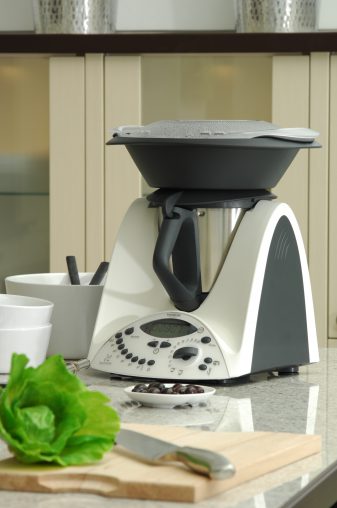
Thermomix Australia has posted a message to its Facebook page apologising to irate customers who purchased the popular multifunction appliance mere weeks before a new and improved unit was rolled out. The company has said it had to comply with global marketing and branding guidelines and was unable to unveil any details about the new unit.
Thanks for taking the time to contact us to express your disappointment, we apologise for our delayed response.
The Australian launch of the Thermomix Model 5 was conducted in line with global brand compliance in accordance with our distribution arrangements. We are deeply sorry that this has resulted in some customers feeling disappointed.
As you can appreciate we value every one of our customers so this is not an ideal situation for everyone involved and we understand your position and take it very seriously.
The TM31 is and always will be an excellent appliance and will continue to be supported just as we have with the previous model the TM21 and we ask for your patience as we work towards addressing your concerns.
Please understand that we also have a commitment to support the broader Thermomix community with the posting of recipes and tips on our Facebook page.
We are currently working with our team to address the concerns of those customers that recently purchased a TM31 and will continue to be committed to providing the best level of service to our very passionate customer base in the hope that we can continue our Thermomix journey together.
Thermomix appliances are largely sold through the in-home demonstration market, with many consumers purchasing their almost $2,000 unit from friends and family. The local Thermomix distributor is based in Perth and is headed up by managing director Grace Mazur.
When Appliance Retailer contacted Mazur for comment, we were directed to Thermomix’s public relations agency, and we are currently awaiting their response.
Although sales figures are hard to come by due to its unique channel strategy, Thermomix is understood to be phenomenally successful in Australia and, for the most part, its products receive stellar reviews on social media and through word-of-mouth. Over the past few years, several brands have attempted to replicate Thermomix functionality with benchtop appliances available through retailers, though this is seen as a struggle, as no other brand has been prepared to commit the resources to wide-ranging demonstrations.
In October 2013, Appliance Retailer traveled to a Hong Kong electronics fair with a small appliance importer looking to link up with a multifunction cooker in the Thermomix ilk; here is an excerpt from that experience:
The real Thermomix is being sold person-to-person through the demonstration channel, and is being marketed under licence by a Perth company. With units selling for around $1,900, this is a market several suppliers are trying to crack, though it is hard to replicate the demonstration required at store level and avoid any patent or trademark infringement.
The first option is a European company that makes a unit similar to the Thermomix but it is very expensive; around US $500 per unit. In addition to this, the director of this company tells Thomas (name changed) that company policy dictates he only sign with one supplier per territory, and other Australians have already visited him, though of course he won’t reveal who. This is an obvious and common tactic, Thomas says.
Thomas seems quite enamoured with this model despite his worries over the price, and agrees with the manufacturer that it is technically a better cooker than the Thermomix.
Next up is another supplier of home cookers. This gentleman is clearly in an agitated state and digresses from his normal sales pitch by sharing an anecdote about sourcing show politics.
“I will not be at the Canton Fair next week,” he says. “The organisers emailed me last night to cancel my stand.”
He says he paid US $20,000 for the stand and that he will not get it all back due to administration fees. I ask him why they have done this and he hints at rival manufacturers slipping money under the table to keep his products out of sight.
Regardless of this man’s misfortune, his product is not up to Thomas’ requirements, although the US $200 price does hold some appeal.
Finally, Thomas visits a third home cooker supplier, but he was too late.
“I would like to talk about your Thermomix product; what’s the unit price?” he asks the lady at the booth.
“No, you cannot have that product,” she replies.
“Why not?”
“Kogan has exclusive in Australia.”
Later that evening, Thomas is taken out to dinner by the Hong Kong-based executives of his humidifier factory in China. This is the company that already has his business, rivals to the earlier company that can’t get the sensor right.
It is a festive night with seemingly endless supply of amazing Chinese specialties. At the end of the evening, Thomas and his Hong Kong business partners toast each other and toast to a long relationship.
“The thing is,” he leans in and whispers in my ear, “when you get a good factory that you can trust, you stick with them forever.”

